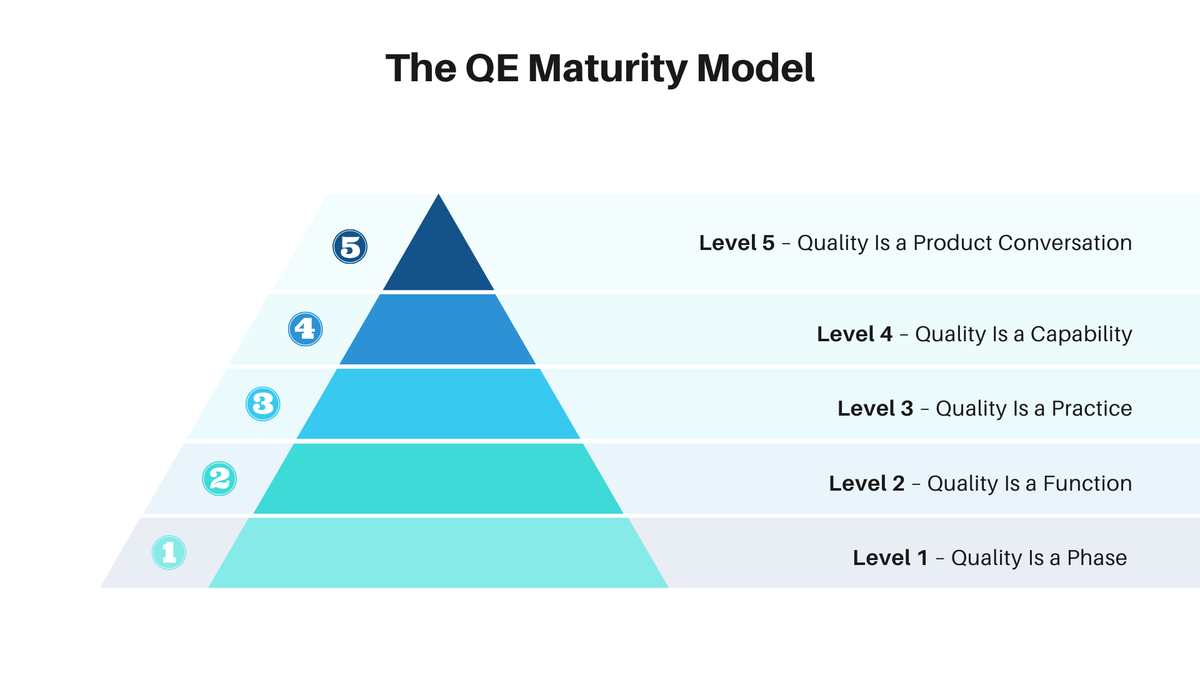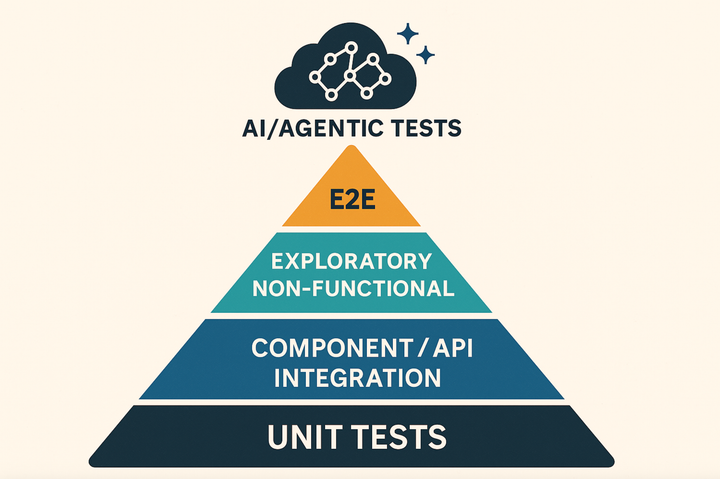Evolving the QE Maturity Model: Quality Beyond Testing

This is the post that launched Break the Build.
It’s for every engineer, tester, or leader who's felt the pain of broken QA processes — and wants something better. I’ve spent 15+ years in the trenches of testing and automation, and this is the truth I wish someone had handed me years ago.
🔹 Level 1 – Quality Is a Phase
- Testing: Manual testing dominates and happens at the end of the sprint or even post-release. Regression takes days (or weeks).
- Culture: QA is treated as a safety net rather than a partner. Engineers "throw it over the wall" and move on.
- Org Design: QA is a separate team, often under-resourced and reactive.
- Metrics: Limited to bug counts and pass/fail test cases—none of which reflect true quality.
- Tooling: Local scripts, Excel test cases, and no CI integration.
💡 The pain here is high: late bugs, blame games, and missed deadlines.
🔹 Level 2 – Quality Is a Function
- Testing: Automation begins, but it’s UI-heavy and fragile. Coverage is partial and mostly regression-focused.
- Culture: Testing is acknowledged but often rushed. QAs still get pulled in after dev is “done.”
- Org Design: Automation engineers appear, but they’re still siloed from development teams.
- Metrics: Coverage is tracked—often manually—but quality signals are shallow.
- Tooling: Some tests run in CI, but they’re unreliable and slow.
💡 You’ve taken a step forward, but technical debt starts to mount.
🔹 Level 3 – Quality Is a Practice
- Testing: Test cases are mapped to requirements. Pipelines stabilize. Coverage includes API, component, and integration layers.
- Culture: Shift-left begins. Engineers and QEs talk early and often.
- Org Design: QEs are embedded in product teams. Test planning happens during grooming and design.
- Metrics: Flakiness rates, test debt, and traceability begin to surface in conversations.
- Tooling: CI/CD improves. Performance, accessibility, and security testing are incorporated earlier.
💡 This is the tipping point—teams now prevent bugs instead of chasing them.
🔹 Level 4 – Quality Is a Capability
- Testing: Tests are modular, resilient, and data-driven. Synthetic test data, test doubles, and mocks are commonly used.
- Culture: Developers and QEs co-own outcomes. Code reviews include test design.
- Org Design: Platform QE roles emerge, enabling tools, practices, and frameworks at scale.
- Metrics: MTTR, defect escape rate, lead time, deployment frequency—all are visible and improving.
- Tooling: Dashboards, observability, test analytics, and feedback loops are integrated into the pipeline.
💡 Quality is no longer one person’s job—it’s a shared capability that unlocks velocity.
🔹 Level 5 – Quality Is a Product Conversation
- Testing: Intelligent, risk-based testing powered by GenAI and self-healing capabilities. Test strategy adapts to product and business priorities.
- Culture: Everyone—from PM to dev to QE—thinks about quality early and often. It’s embedded into product discovery and experimentation.
- Org Design: QE dissolves as a "team" and re-emerges as a competency across engineering.
- Metrics: Quality KPIs (like user satisfaction, NPS, churn) are tied directly to engineering initiatives.
- Tooling: Autonomous agents assist with test generation, triage, and release readiness—making quality faster and smarter.
💡 At this level, quality is not just built in. It’s a strategic advantage.
Final Thought
Quality Engineering isn’t just a testing strategy—it’s an engineering culture. The most mature organizations don’t just test better—they build better.
Where do you see your team on this spectrum?
What would it take to level up?



Comments ()